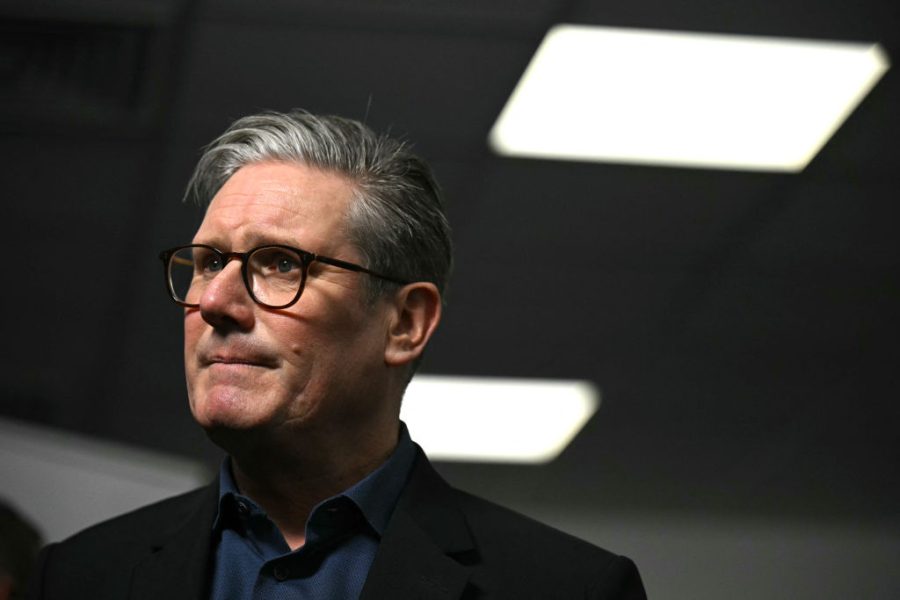The government has unveiled its new ‘AI Opportunities Action Plan’ – a ten-syllable, fifty-point proposal to grow the UK’s AI industry. Among the only memorable points of the fifty unveiled last month was the creation of ‘AI growth zones’, clusters of AI expertise dotted around the country. The only growth zone named in the plan was Culham, a sleepy village in Oxfordshire. I went to pay it a visit.
Culham and its nearby sister village Harwell were among the top sites in the world for scientific research in the mid-20th century and were run by what’s now called the UK Atomic Energy Authority, which conducts nuclear experiments. Rumour has it, the area was of such strategic significance the government redirected production at the steelworks responsible for repairing bomb-damaged Westminster to support the boffins in Oxfordshire.
The government has had to pin its hopes for AI growth on planning decisions made half a century ago
The old visitors’ book I was shown at Culham is testament to this. In it I found the signature from one W. Churchill, dated 1954. Overleaf, Eisenhower scribbles his name down, then Khrushchev, then Queen Elizabeth, and on it went: a veritable who’s who of world powers. It was at this site in the late 1970s, not long after the first commercial Concorde flight took off from Heathrow, that construction began on a project called ‘Joint European Torus’ or JET, a major scientific experiment to explore the use of nuclear fusion to generate energy.
Such were the immense power demands of JET, that the project had its own connection to the National Grid installed, and a 400Kv substation was built on the site – enough to power a small city. At the time, coal was the primary source of energy for electricity and the UK was mining more than 100 million tonnes of it a year. But the project was justified in the name of scientific endeavour, with the hope that Britain would one day build its own nuclear fusion power plants.
JET was decommissioned just over a year ago, freeing up the grid connection for alternative uses – including building the power-hungry data centres that will fuel Culham’s AI growth zone. Today it takes as much as a decade for a private data centre company to get access to a grid connection – a huge source of frustration.
Shockingly then, the government has had to pin its hopes for AI growth on planning decisions made half a century ago, an era when Britain got things done. Keir Starmer’s new mantra of ‘slashing red tape to get Britain building’ is easily justified, therefore, and his commitment this week to putting the UK ‘back in the global race for nuclear energy’ is welcome. A majority the size of Labour’s, unlikely to last long, is a rare opportunity to do big bold things that not everybody likes.
But after a raft of tax rises and Downing Street messaging that ‘things are much worse than we thought’ sent business confidence plummeting, Starmer’s new boosterism is suffering a credibility problem. The big projects the government supports, mostly over a decade from completion, can do little in the short term to reassure. Up against a freewheeling Donald Trump who promises to cut taxes and tear up ten regulations for every new one introduced, much more will be needed to convince investors to park their money in UK plc.
A clear example of the challenge lies back at Culham, which was also once home to a second jet. This jet was a prototype rocket propulsion system designed by Reaction Engines – once dubbed the successor to Concorde. Reaction received £60 million in government funding in 2016 and was later boosted by more from the private sector. Last year the firm needed extra cash to get the prototype over the line – but no private investors came forward, and the government shrugged. In November it collapsed.
Concorde-style innovation in supersonic travel lives on – but not in Britain. Last week an American firm called Boom Technology made its first supersonic test flight – the first for a passenger jet in two decades since the UK grounded Concorde – with hopes for a commercial service in under a decade.
The company’s founder, Blake Scholl, celebrated by posting an image of a jet adorned with a US flag. He captioned it ‘Make America Boom again’. Let’s hope its first commercial flight lands at Heathrow – runway number three.







Comments